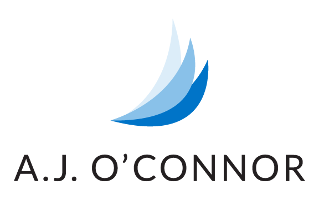
Which Is Better One Or Two Facilitators?
Tactical Decisions to Achieve Your Learning & Development Strategic Goals
You’ve worked hard all year to effectively manage your team, leadership, coaching, and other talent development/management programs, thinking strategically to address pressing issues as they arise while gearing your workforce for the future. You’ve planned programs, instituted new systems, even changed your usual practices to meet the new demands of this economy, ever in flux and demanding. Sometimes, though, it’s the simple things, things that you may take for granted, that can mean the difference between a program or initiative’s success and the need for a do-over.
In this post, we’ll focus on some tactical questions that can spell success for your well-planned strategies. We’ll examine the pros and cons of each question, so you can weigh the possibilities against your own circumstances, putting just the right touch in place for your particular environment and culture.
The first is a question our clients frequently ask whether planning a workshop or a series of facilitated sessions as part of a blended learning solution.
When designing face-to-face learning, how many facilitators are optimal?
Simple question? Yes. But dig deeper and you will find that the decision yields more questions that will have a greater impact than you may initially imagine.
To address this question, we looked to fundamental facilitation best practices, then surveyed AJO’s Senior Consultants/Facilitators for their experience and insights. Here are some implications for each for your program planning consideration.
First, what is the role of a facilitator?
Long-time facilitation expert and one of the co-founders of the International Association of Facilitators (IAF), Gary Rush, defines facilitation this way:
“Facilitation is the process of making something easier. A Facilitator is a content-neutral person who guides the group to a consensus using effective processes to enable a group to make effective decisions while supporting a collaborative and respectful environment that encourages full participation and helps groups overcome barriers to accomplishing their task. The Facilitator is responsible for the context.”
If we accept this definition, when do you need a facilitator or co-facilitators? A facilitated event may be used to guide participants or team members through a structured process to complete a defined purpose. You may find that a facilitated process is the best solution for any of the following and more:
- When you need a group to reach consensus
- When you need a group to accomplish a specific task within a specific timeframe
- When you need multiple ideas
- When you need to gather and analyze data or information then make a decision
- When you need to resolve group or team conflict
- When you need to establish, grow and cement relationships of a newly formed team
- When you need to help a team become unstuck
The bottom line, facilitation is about helping people collaborate, to work better together, to make better decisions, solve problems or complete a task more effectively than they may do on their own. It is about managing the milieu and the dynamics of the group to ensure the best possible outcome in reaching a strategic goal.
That’s a tall order, given the diverse personalities and perspectives that any group may embody.
Facilitator Core Skills
So, what are the core skills a facilitator must possess in order to adequately manage both the process and the interactions inherent in any group activity?
According to the International Association of Facilitators, a facilitator must be able to accomplish the following:
- Create collaborative client relationships
- Plan appropriate group processes
- Create and sustain a participatory environment
- Guide the group to appropriate and useful outcomes
- Build and maintain professional knowledge
- Model a positive professional attitude
Each of these competencies contains several specific and essential skills that you can find in the IAF Facilitator Core Competencies (click the image on the right to launch the PDF).
AJO’s Expert Facilitators Weigh In
Knowing the level of expertise that is essential to facilitate a positive outcome, the question of whether to use one facilitator or two is more complex than it originally seems. We surveyed our AJO Senior Consultants/Facilitators to gain some insight from their experience facilitating our programs and close to 30 of them responded.
Each of them had experience facilitating solo and co-facilitating with another. Here are some of their insights highlighted through our survey.
Setting aside the practical budget considerations that may drive a facilitation decision for a program, 41% of AJO Senior Consultants/Facilitators were flexible about facilitating solo or co-facilitating. Only 10% indicated a preference for facilitating alone, while 24% expressed a preference for working with a co-facilitator. Almost one-quarter (24%) suggested that it would depend on the circumstances of the program.
When queried on what a facilitation decision would depend, Senior Consultants/Facilitators cited logistics, including the size of the group, length of the program, and complexity of the content as primary considerations. Business and budget imperatives and the facilitator relationship with the group, the need to rapidly build trust, and facilitator subject matter expertise are additional considerations mentioned.
The Benefits and Pitfalls of Solo Facilitation
What do AJO Senior Consultants view as the benefits and pitfalls of solo facilitation? Here’s what they shared:
| Solo Facilitation Benefits | Solo Facilitation Pitfalls |
|---|---|
|
Logistical Considerations
Participant or Organization Considerations
|
From the facilitator point of view:
From the participants’ point of view:
|
The Benefits and Pitfalls of Co-Facilitation
What do AJO Senior Consultants view as the benefits and pitfalls of co-facilitation? Here’s what they shared:
| Co-Facilitation Benefits | Co-Facilitation Pitfalls |
|---|---|
|
Logistical Considerations
Participant or Organization Considerations
|
From the facilitator point of view:
From the participants’ point of view:
From the organization’s point of view:
|
AJO’s VP of Talent Development, Bill Accordino offers his perspective gained from years of developing and facilitating programs for a wide range of organizations, Bill believes that there is no absolute answer to the question. However, there are several factors that should drive the decision to use one or two facilitators/co-facilitation.
Bill Accordino supports the opinion of AJO’s consulting cadre, echoing their conclusion that the size of the group, the goals of the program, the type of content, and the amount of interactivity within the program design are all factors to consider when choosing the facilitator structure for any program. He uses a consultative approach to determine his recommendations, discussing with the client the business and leadership challenges that the program may address. If a program, workshop, or series of workshops will address the client’s needs, then logistics including facilitator decisions will be discussed.
According to Bill, AJO will take these elements into consideration when assisting the client firm to make a facilitator decision.
- If a program requires delivery of complex content, exercises and role-plays, we recommend one facilitator if the group size is 8 – 10. If the group exceeds that number then two facilitators will be recommended. It may be a good idea to bring in a subject matter expert as well as a skilled facilitator to manage the session when a larger group or more complex subject matter is involved.
- The more interactive and complex the activities and debriefing of activities the session contains, the more likely that two facilitators may be required to maintain quality and keep the session moving. If this does not meet the client firm’s budgetary needs, then we can customize the content to be less interactive.
In summary, AJO recommends the appropriate number of facilitators based on the needs, the learning objectives, and the content of the workshop.
Facilitators are Key to the Content AND the Context- Choose Wisely to Achieve Your Tactical and Strategic Goals
An instructor of mine once used the analogy of the hourglass to illustrate the importance of a good facilitator or co-facilitation team.
Consider that the sand inside the hourglass is the Content or the subject matter of the workshop or group session.
The hourglass provides the shape. It gives the content form and function, providing Context to the subject matter of the workshop.
Without the hourglass, the sand would just be sand.
And without the sand, the hourglass would just be an empty vessel.
Photo by Nathan Dumlao on Unsplash
The facilitator or co-facilitator team’s job is to ensure both Content and Context work together and is delivered in a tactically smart manner to ensure your program meets your strategic goals.
So, what will it be for your organization? One facilitator or two? The conclusion is up to you. Choose wisely to ensure the outcome you desire.
Kathy Flora is a Career and Executive Coach and AJO Blogger who is actively pursuing her life’s passion, helping others find and fulfill theirs. Known as a positive change agent, mentor and guide, she has assisted hundreds of leaders and their teams understand their strengths, collaborate effectively, and drive organizational success. She has a special affinity for working with virtual teams, using webinars, virtual meet-ups, and online collaborative communities to optimize communication and productivity. Her experience spans over 25 years in executive management and leadership, career development, facilitation, and consulting in private firms, state government, and in federal agencies.

